updated on September 25, 2005
file name: cockpi.html
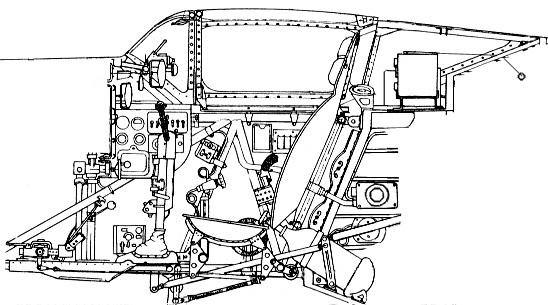
Here we see the right side of the cockpit; we recognize:
-
the seat equipped with a 9 mm thick armor plate; the rear part is fixed
to two trasversal tubes; the lower part is adjustable, hinged to four triangular
plates that are hinged to trasversal tubes; a spring balances the
weight during adjustements;
-
the control colums, mounted on a pavement extended in front of the seat
(no walls or pavements are there under or behind the seat);
-
the electric plant panel;
-
the oxygen bottle, on the right of the seat; it should be connected to
the tap visible on the side structure, and then to a mask;
-
the RSI-3 or RSI-4 communication radio on a plan behind the headrest; a
wire is visible, connecting the radio boxes to the aerial;
-
the radio panel, close to the floor;
-
a signalation pistol on the side structure, and a support for signalation
rockets on the wall;
-
a cockpit tool case on its support behind the headrest;
-
the canopy sliding guides, fixed to the tubes structure and under the central
strut (splitted) of the rear canopy panel;
-
the hinged rod from the control column to the horizontal tail surfaces;
-
the pedals, connected to the rudder by wires;
-
the control panel, with three handles for guns arming;
-
the PBP-1 gunsight is fixed to a trasversal curved tube.
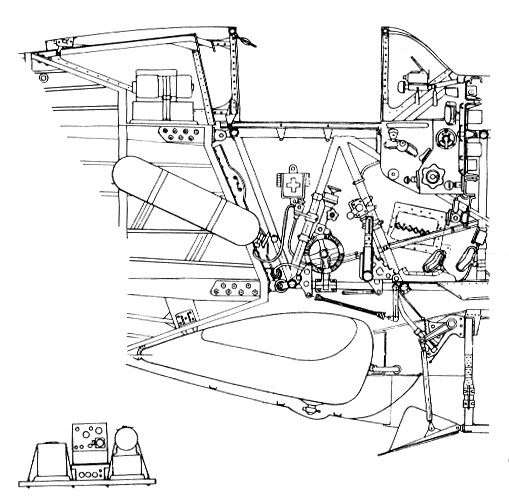 |
On the left side of the cockpit, we recognize:
-
a compressed air bottle, chargeable from a small hole on the side panel,
and connected with the tap fixed on the strut;
-
the crank actioning the water cooler flap;
-
a first aid kit;
-
the engine control panel, with the throttle and related controls;
-
some radio devices;
-
some levers;
-
the handles for emergency opening of the main undercarriage;
-
the inner side of the foothold on the left side.
The radio boxes were not always installed; they were surely absent on aircraft
without the radio mast, and even in some aircraft with radio mast installed.
below: the radio vane. Note the hole, clearly visible from outside
on many photos.
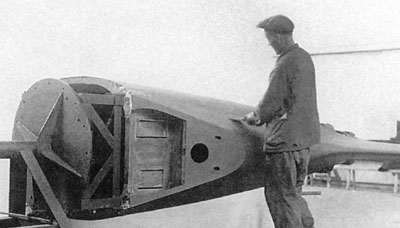
|
 |
On this plan view, we recognize:
-
the rear panel with the radio boxes;
-
the lower part of the seat (the rear part is omitted) with the height regulation
lever, and the trasversal tubes on which the seat is undirectly hinged;
-
the minimal pavement in front of the seat, including the control bar base
and the pedals;
-
the tubes structure is sectioned on a low level, and let see the radio
box on the left, the flaps wheels on the left side, the trimmers wheels
on the right side;
-
a tools package behind the headrest.
|
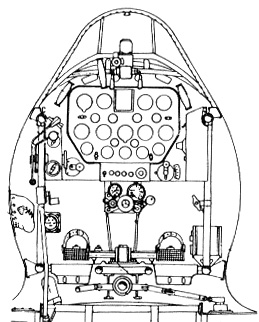 |
On this image we recognize:
-
the instrument panel with 15 instruments;
-
3 gun arming handles on it;
-
the gunsight and the trasversal bar supporting it;
-
the tubular structure (well separed from the side panels);
-
the connection mechanism between the control bar (omitted) and the ailerons
actuating rods;
-
the pedals;
-
a tissue cap covering the footstep on the inner side;
-
the indicator of cooler flap position on the left;
-
the controls of the KPA-3 bis oxygen device under the instruments panel;
- the levers of throttle (upper) and altitude correction of thrust
(lower) on the left side (they pass through a slot on the side panel,
not visible here).
|
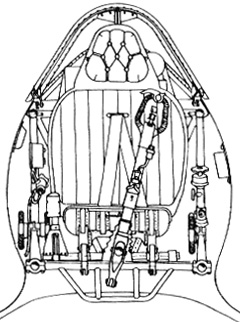 |
Left:
-
the seat with the rear belts passing through a slot (side belts aren't
visible, but they should be);
-
the control column moved towards a side;
-
the control handle of seat position on its right;
-
the guides of the canopy (see enlarged detail).
Right top:
the control column top with double handle; two firing buttons and the
wheel brake lever.
Right below:
the PBP-1 reflexion gunsight.
|
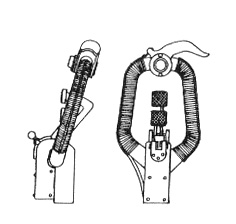
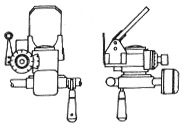 |
Here are the instrument panel and the electrical panel on the right
side (legenda by Audrius Nairanauskas)

1. Altimeter
2. Direction (Compass)
3. Artificial horizon
4. Manifold pressure gauge
5. Fuel gauge
6. Speed indicator
7. Slip indicator (Turn and bank)
8. Climb indicator (Variometer)
9. Tachometer
9.1. Oil temperature; Fuel pressure (left); Oil pressure (right)
10. …
11. …
12. …
13. Water temperature
14. Oil temperature (I don’t know what's the difference with 9.1) |
15. Main landing gear switch (up-retracted, down-ejected)
16. Shutter of oil cooler..
17. Red light…
18. Red light…
19. Landing gear
20. Left landing gear indicator – ejected (red light)
21. Left landing gear indicator – rejected (green light)
22. Right landing gear indicator – rejected (green light)
23. Right landing gear indicator – ejected (red light)
24. …
25. …
26. …
27. …
28. … |
29. Clock
30. Ammeter
31. Cockpit lightning.
32. Instrument panel lightning
33. Bomb trigger-timer
34.......
35. Radio switch
36. Clock /Pito switch.
37. Landing light
38. Electricity wire –ON
39. Aircraft navigation lights
40. Switch ON
41. Airfield accumulator
42. Rocket launch. |
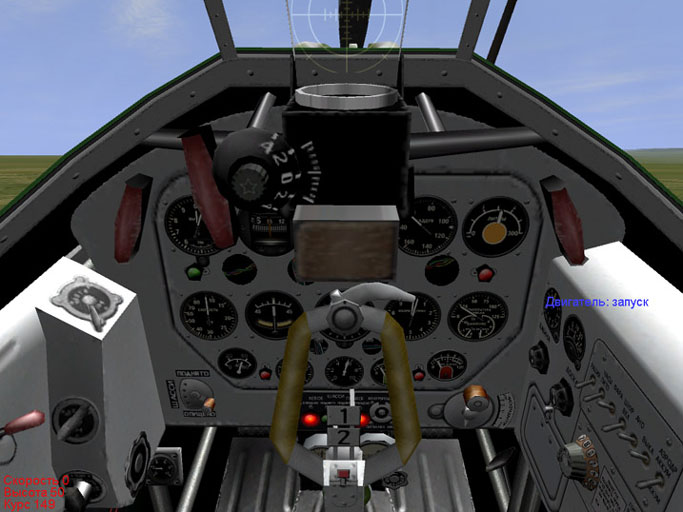 |
Here are some views from the Il-2 flight simulator.
The cockpit appears to be realistic in shape, and I would suggest to
consider it as a likely reference for some color details. |
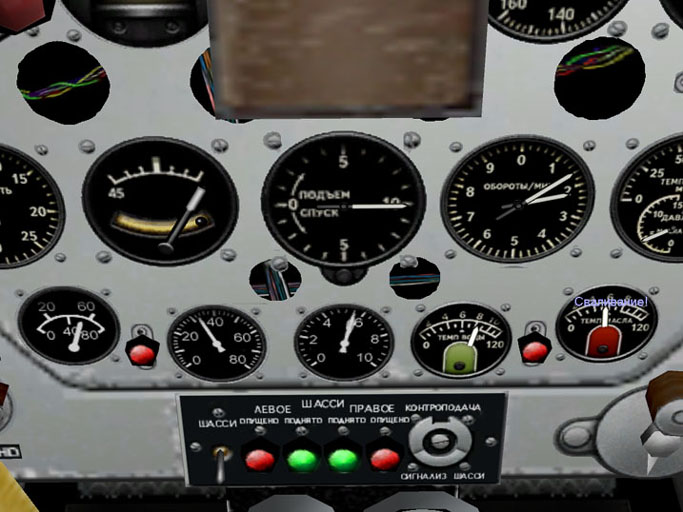 |
|
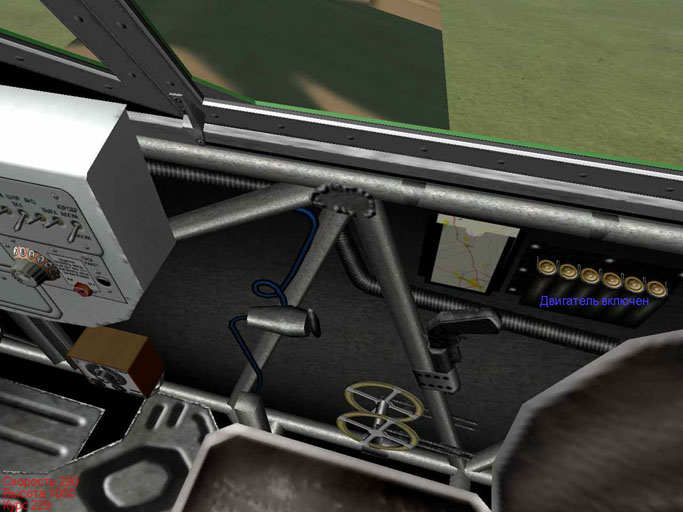 |
Here is the virtual right side view.
About the general colours of the structure, light grey is unlikely
in 1941.
Unpainted steel tubes are in contrast with what one can see on photos,
too. |
The real colors of the MiG-3 cockpit are still unclear. On bw photos,
one can see that the instrument panel can be either black or light.
Tubes structure is seen both dark (probably dark grey A-14) or light
(perhaps light blue-green primer, or light blue as the undersurfaces).
Inner face of fuselage panels appears light; in the Veesiveehma depot
there is a panel with a light blue-green painted inner surface.
Green is likely for some boxes, as radio and electric equipment. Some
small details were unpainted.
The compressed air bottle should be black, while the oxygen bottle
could be blue or green.
The internal surfaces of the wooden rear fuselage could be painted
silver or ALG-1 yellow primer.
The example under restoration by Rusavia has different colors: light
blue pipe frame, ALG-5 primier floor and lower seat, black seat armor,
yellow wooden structure.
I don't know if they have found traces of old paint on the restored
wreckages. On most restored Polikarpovs, green and light blue are the dominant
colors in the cockpit.
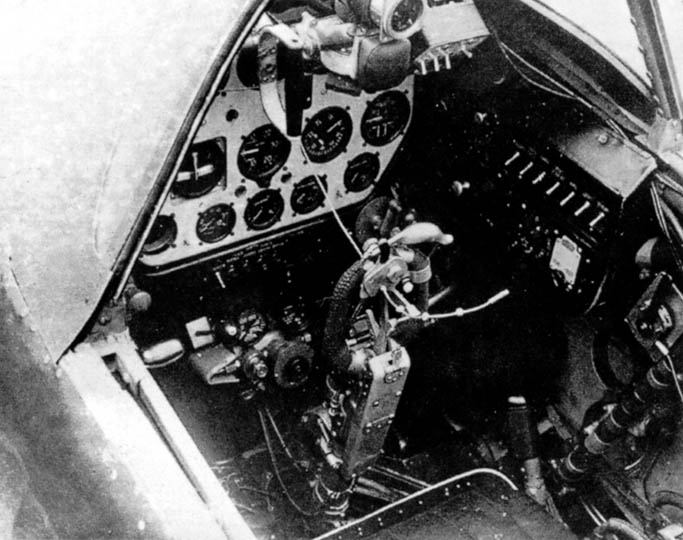 |
Here we see black electric panel and light instrument panel.
The light profile just on the left of the photo
is the sliding canopy side guide.
The MiG-3's sliding canopy had three guides:
-
left and right side guides, close to the tube structure

-
and centre rear guide, fixed under the central frame of the rear part of
canopy.

The frame itself was divided by a central slot that was visible from
outside.
The scarce accessibility of this rear guide prevented the installation
of a quick emergency release as on Spitfires, so most pilots flew with
opened canopy. |
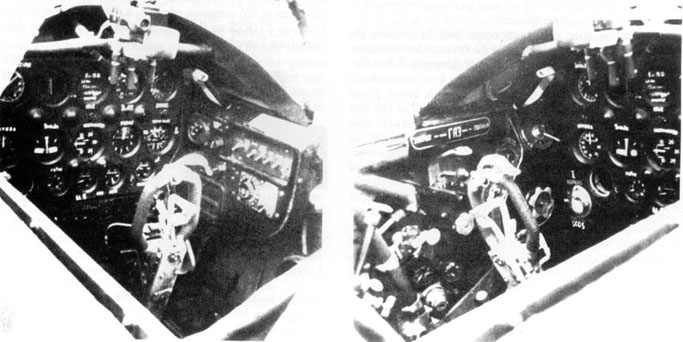 |
Here the instrument panel is black.
The photo below shows a closure mechanism inside of sliding canopy,
on the right side only.
It was not installed on all aircrafts.

|
 |
Here we see :
-
dark pipe structure (dark grey A-14?);
-
strongly worn plates for external panels support;
-
dark seat;
-
dark radio bay (probably green as the uppersurfaces);
-
the absence of the closure mechanism on the canopy frame.
Photo copyright Jan Koennig
|
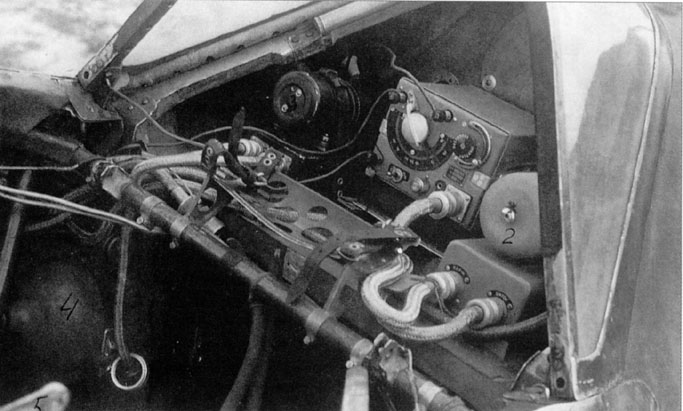 |
Here is the RSI-3 radio set installed on I-200 n.03.
It is similar to that installed on MiG-3s.
The dominant color of the boxes should be green.
The shape of the bay and of the rear part of the canopy is different
from those of series aircraft.
The oxygen bottle (on the left below) and the support and belts
for a tool case (centre) are visible too. |
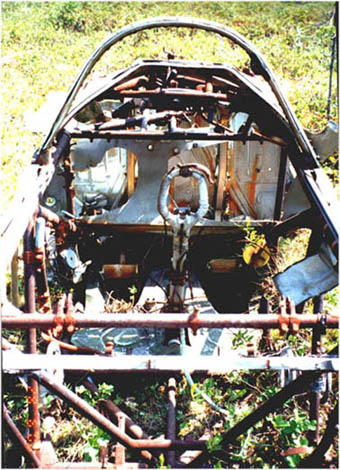 |
On the photo of this relic found in Karelia by the firm Aviascan, we
recognize:
-
the tubes structure, including an oblique vee for the reat seat part and
an horizontal vee supporting undirectly the lower part of the seat, not
well visible on drawings above;
-
the control column in good conditions;
-
a reptangular frame for the instrument panel;
-
the curved tube supporting the gunsight (missing);
|
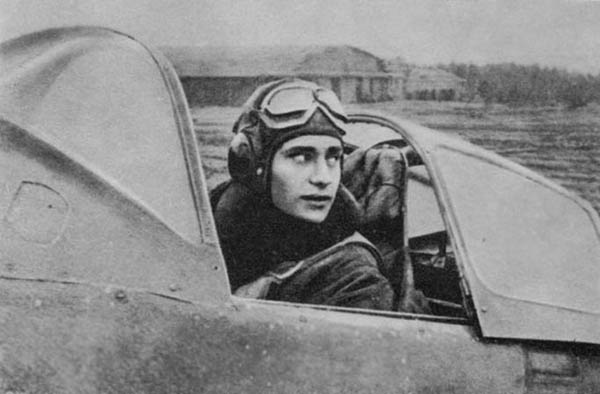 |
On this image, some details are noteworthy:
-
the overposition between sliding canopy and fuselage;
-
the headrest;
-
the lack of radio boxes;
-
the longitudinal structures on the windshield, scarcely visible because
they are on the inner side of the trasparent part;
-
the hand grip door under the windshield.
|



















